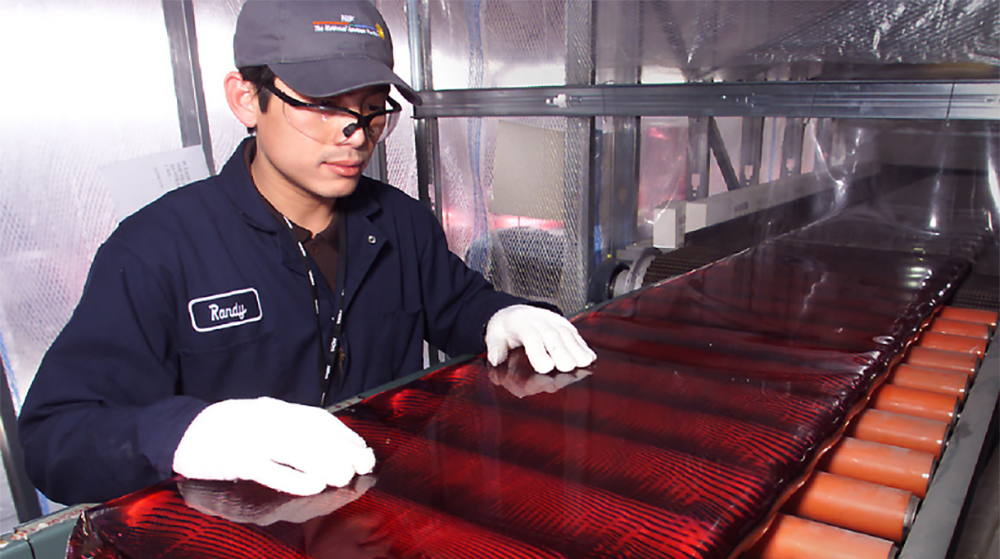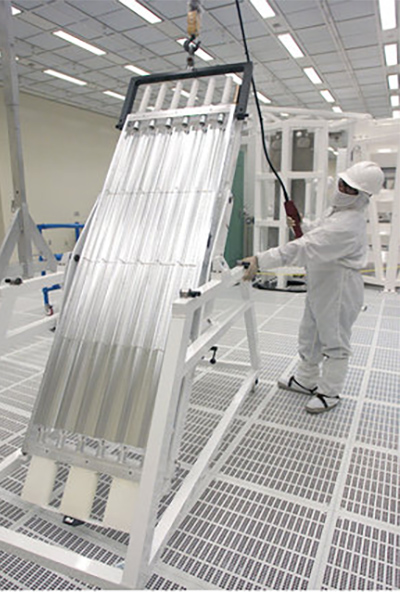Laser Glass

The Heart of the System
Laser glass is the heart of the NIF laser system; it’s the material that amplifies the laser light to the very high energies required for experiments.
NIF’s laser glass is a phosphate glass that contains neodymium atoms (Nd:glass). Neodymium-doped laser glass is the preferred gain medium for use in high-peak-power lasers for fusion energy research.
The NIF laser system uses about 3,070 42-kilogram plates of laser glass. Each glass plate measures 3.4 by 46 by 81 centimeters (about 3 feet long and about half as wide). If stacked end-to-end, the plates would form a continuous ribbon of glass 1.5 miles long. The glass slabs are set on edge at a specific angle, known as Brewster’s angle, so that the laser beams have very low reflective losses while propagating through the glass.
To produce this glass quickly enough to meet construction schedules, Hoya Corporation, USA, and SCHOTT North America developed a new production process that melts raw materials into one continuously flowing strip of high optical-quality laser glass. Once cooled, the glass is cut into pieces as it leaves the production system; the segments are then polished to the demanding NIF specifications. This novel, continuous melting process makes meter-sized plates of laser glass at a rate 20 times faster, 5 times cheaper, and with 2 to 3 times better optical quality than with previous processes.
Flashlamps
Each NIF beamline contains two large amplifier sections designed to efficiently amplify the 1-joule input pulse from the injection laser system to each of the 192 beams to the required power and energy while maintaining high beam quality. The amplifiers, with 16 glass slabs per beam, are arranged in two amplifier sections—the main amplifier and the power amplifier. Together, these amplifiers provide 99.99 percent of NIF’s energy and power.
The amplifier slabs are surrounded by vertical arrays of flashlamps. Measuring nearly 180 centimeters (6 feet) of arc length, NIF’s 7,680 flashlamps are the largest commercial units ever made. Each is driven with about 50,000 joules of electrical energy. The flashlamps excite the neodymium in the glass slabs to provide optical gain at the infrared frequency of 1,053-nanometer wavelength, also referred to as “one omega,” or 1ω, light. Some of the energy stored in the neodymium is released when the laser pulses from the injection laser system pass through the amplifier slabs (see NIF’s Guide to How Lasers Work).
Next Up: Optical Switch




